Abstract
We have investigated the substrate specificity of ammonia monooxygenase in whole cells of the nitrifying bacterium Nitrosomonas europaea for a number of aliphatic halogenated hydrocarbons. To determine the effect of the halogen substituent and carbon chain length on substrate reactivity, we measured the rates of oxidation of the monohalogenated ethanes (fluoroethane, chloroethane, bromoethane, and iodoethane) and n-chlorinated C1 to C4 alkanes by whole cells of N. europaea. For monohalogenated ethanes, acetaldehyde was the major organic product and little or none of any of the alternate predicted products (2-halogenated alcohols) were detected. The maximum rate of haloethane oxidation increased with decreasing halogen molecular weight from iodoethane to chloroethane (19 to 221 nmol/min per mg of protein). In addition, the amount of substrate required for the highest rate of haloethane oxidation increased with decreasing halogen molecular weight. For the n-chlorinated alkanes, the rate of dechlorination, as measured by the appearance of the corresponding aldehyde product, was greatest for chloroethane and decreased dramatically for chloropropane and chlorobutane (118, 4, and 8 nmol of aldehyde formed per min per mg of protein, respectively). The concentration profiles for halocarbon oxidation by ammonia monooxygenase showed apparent substrate inhibition when ammonia was used as the reductant source. When hydrazine was used as the electron donor, no substrate inhibition was observed, suggesting that the inhibition resulted from reductant limitation.
Full text
PDF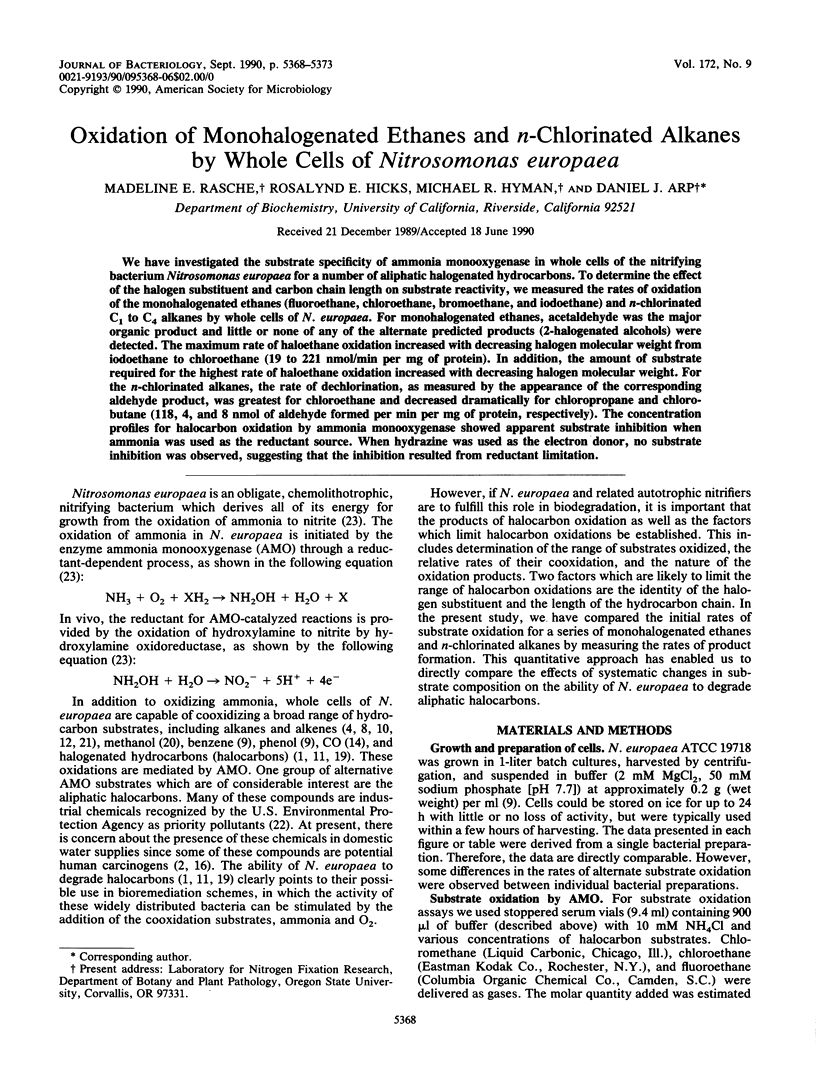
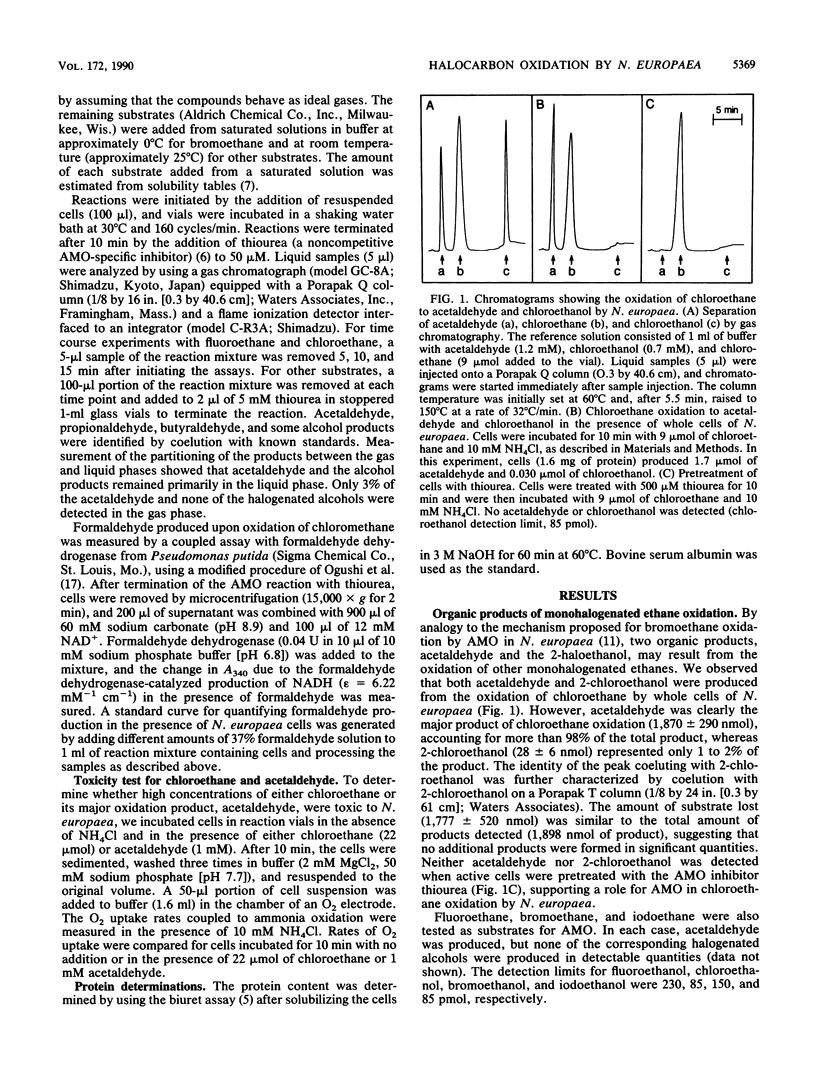
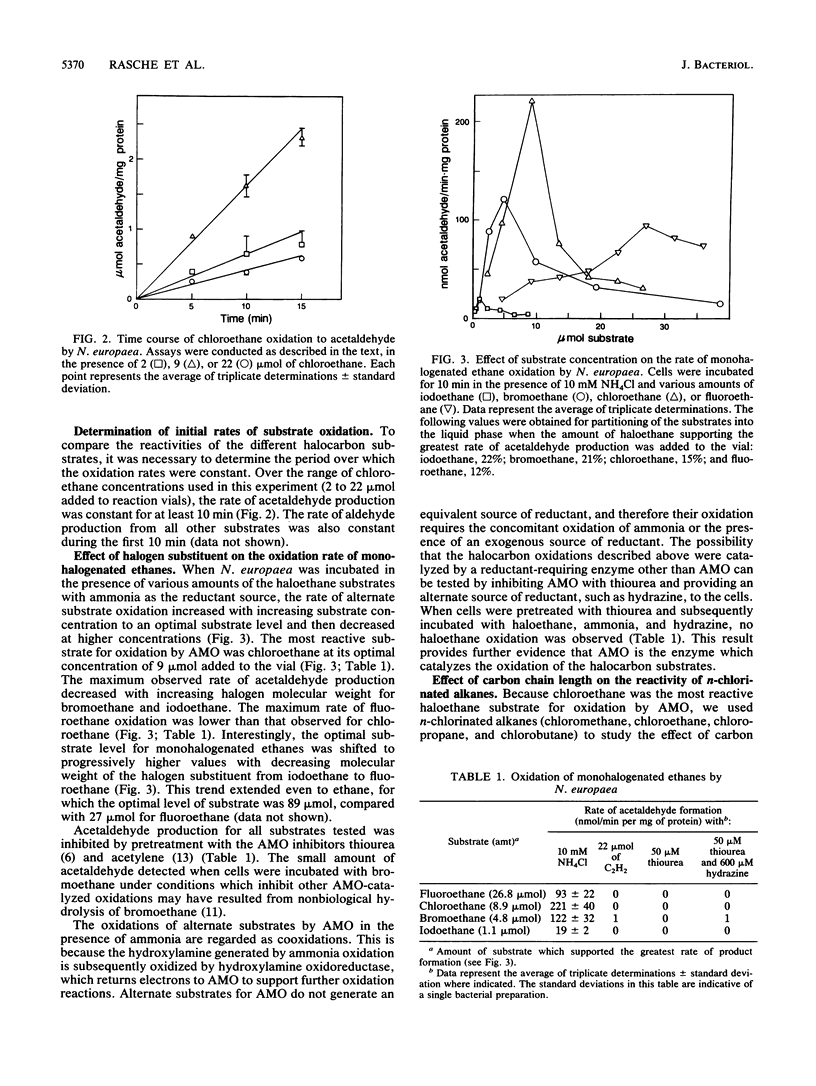
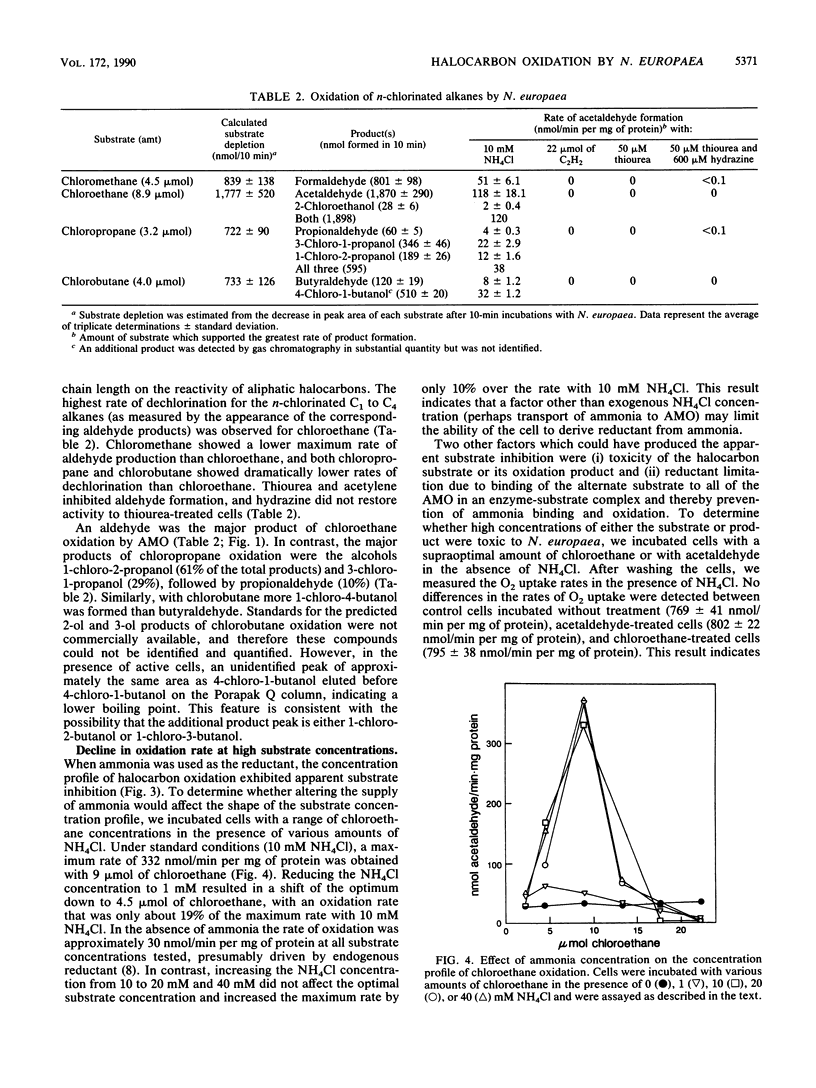
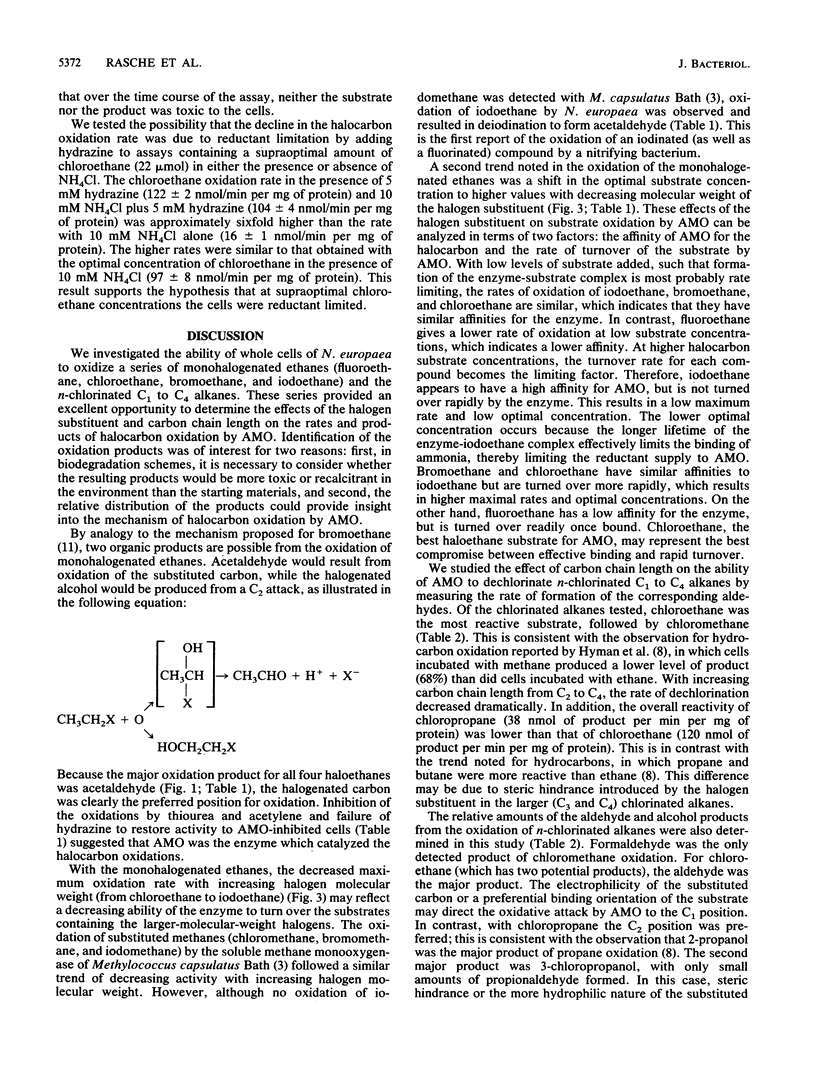
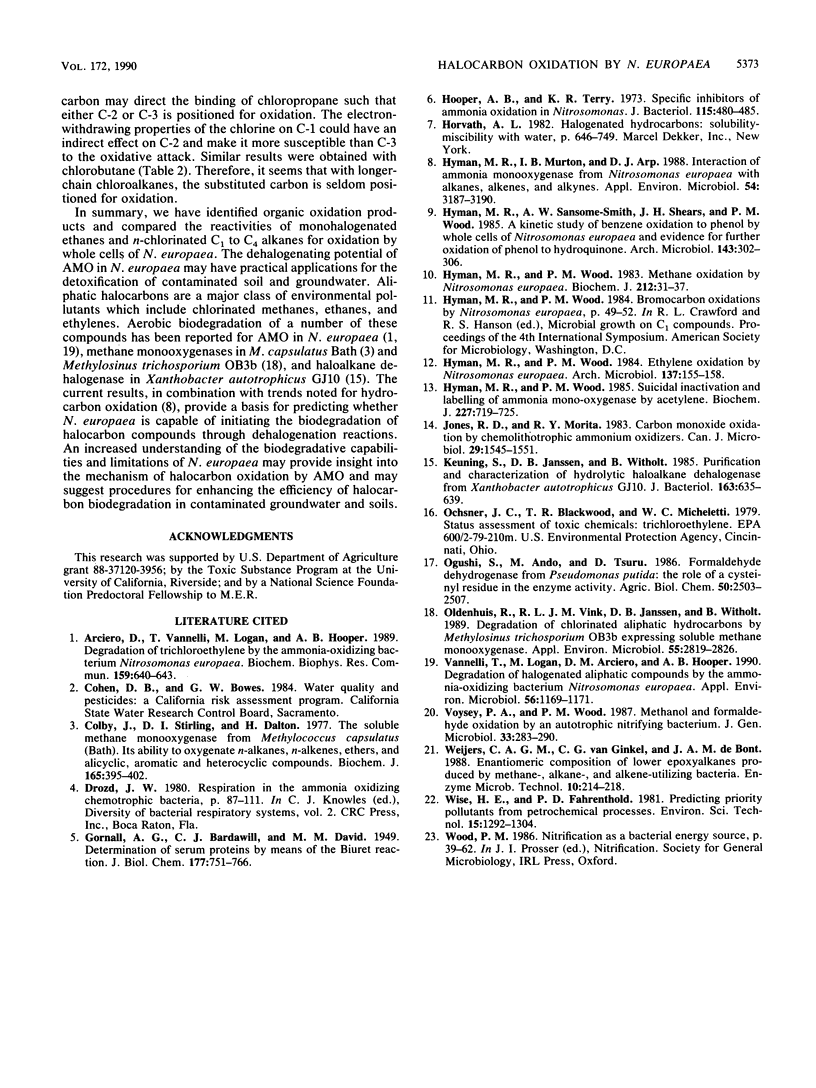
Selected References
These references are in PubMed. This may not be the complete list of references from this article.
- Arciero D., Vannelli T., Logan M., Hooper A. B. Degradation of trichloroethylene by the ammonia-oxidizing bacterium Nitrosomonas europaea. Biochem Biophys Res Commun. 1989 Mar 15;159(2):640–643. doi: 10.1016/0006-291x(89)90042-9. [DOI] [PubMed] [Google Scholar]
- Colby J., Stirling D. I., Dalton H. The soluble methane mono-oxygenase of Methylococcus capsulatus (Bath). Its ability to oxygenate n-alkanes, n-alkenes, ethers, and alicyclic, aromatic and heterocyclic compounds. Biochem J. 1977 Aug 1;165(2):395–402. doi: 10.1042/bj1650395. [DOI] [PMC free article] [PubMed] [Google Scholar]
- Hooper A. B., Terry K. R. Specific inhibitors of ammonia oxidation in Nitrosomonas. J Bacteriol. 1973 Aug;115(2):480–485. doi: 10.1128/jb.115.2.480-485.1973. [DOI] [PMC free article] [PubMed] [Google Scholar]
- Hyman M. R., Murton I. B., Arp D. J. Interaction of Ammonia Monooxygenase from Nitrosomonas europaea with Alkanes, Alkenes, and Alkynes. Appl Environ Microbiol. 1988 Dec;54(12):3187–3190. doi: 10.1128/aem.54.12.3187-3190.1988. [DOI] [PMC free article] [PubMed] [Google Scholar]
- Hyman M. R., Wood P. M. Methane oxidation by Nitrosomonas europaea. Biochem J. 1983 Apr 15;212(1):31–37. doi: 10.1042/bj2120031. [DOI] [PMC free article] [PubMed] [Google Scholar]
- Hyman M. R., Wood P. M. Suicidal inactivation and labelling of ammonia mono-oxygenase by acetylene. Biochem J. 1985 May 1;227(3):719–725. doi: 10.1042/bj2270719. [DOI] [PMC free article] [PubMed] [Google Scholar]
- Keuning S., Janssen D. B., Witholt B. Purification and characterization of hydrolytic haloalkane dehalogenase from Xanthobacter autotrophicus GJ10. J Bacteriol. 1985 Aug;163(2):635–639. doi: 10.1128/jb.163.2.635-639.1985. [DOI] [PMC free article] [PubMed] [Google Scholar]
- Oldenhuis R., Vink R. L., Janssen D. B., Witholt B. Degradation of chlorinated aliphatic hydrocarbons by Methylosinus trichosporium OB3b expressing soluble methane monooxygenase. Appl Environ Microbiol. 1989 Nov;55(11):2819–2826. doi: 10.1128/aem.55.11.2819-2826.1989. [DOI] [PMC free article] [PubMed] [Google Scholar]
- Vannelli T., Logan M., Arciero D. M., Hooper A. B. Degradation of halogenated aliphatic compounds by the ammonia- oxidizing bacterium Nitrosomonas europaea. Appl Environ Microbiol. 1990 Apr;56(4):1169–1171. doi: 10.1128/aem.56.4.1169-1171.1990. [DOI] [PMC free article] [PubMed] [Google Scholar]


